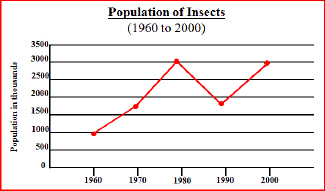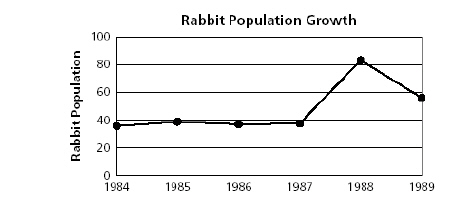Online Study Guide
Instructions
1) You
do not need to type in your name in the space in the top-left area above. The results of this study
guide will not be sent to your teacher.
2) Carefully read each question and all the answer
choices.
3) Select the correct letter from the drop-down feature to the left of each
question.
4) When you are finished, click the “Check Your Work” button in the
bottom-left corner of the page.
5) The software will grade your work, and then it will show
you the results. Note that the correct answer will be displayed beneath the questions.
6)
Keep doing the study guide over until you earn a 100 on it.
|
|
|
1.
|
A farmer sprayed his corn field with a herbicide to kill the weeds. For the
first few seasons the herbicide killed nearly all of the weeds. However, over the next few years,
more and more weeds survived each season. What is the most likely reason that
explains why each year more weeds are surviving?a. | The farmer did not apply enough herbicide during the 3rd and 5th year.
| b. | Over time the herbicide underwent a chemical change that reduced its
effectiveness. | c. | Some weeds survived the first year to reproduce herbicide resistant offspring.
|
|
|
|
2.
|
Individual spiders in a population of tarantulas have a variety of defensive
traits. One trait that most of the spiders have is the ability to flick hairs into the eyes of
predators allowing the spiders to escape from being eaten. Yet a small percentage of the spider
population does not have these hairs.
Why are the tarantulas that have these hairs more
likely to produce offspring than the hairless tarantulas?a. | Hairless tarantulas attract more mates. Therefore they produce more
offspring. | b. | Hairy tarantulas are less likely to be eaten, so they are more likely to survive to
mate. | c. | Tarantulas that have the hairs will blend in with their
environment. |
|
|
|
3.
|
Three species of birds
live on an island. | Bird A | Bird
B | Bird C | Heavy beak for eating
big
seeds | Sharp beak for
eating insects | Sharp but wide beak for insects and/or small seeds | | | | | | |
If the climate changed so that
all the seed-bearing plants on the island died off, which bird or birds would probably be the
least affected? a. | Bird B | b. | Both Bird A & Bird B | c. | Bird
A |
|
|
|
4.
|
The table below shows four different populations of bacteria and the percentages
that are resistant to different antibiotics. Population | Antibiotic W | Antibiotic X | Antibiotic Y | Antibiotic
Z | 1 | 9.3% | 17.1 % | 0.0 % | 30.1 % | 2 | 18.1% | 46.9% | 18.4% | 0.0% | 3 | 0.0% | 95.1 % | 1.6 % | 82.0% | 4 | 0.0% | 3.3 % | 26.6 % | 4.1% | | | | | |
If all four populations start with the same number of bacteria,
which population
will have the greatest number of survivors when treated with Antibiotic
Y?a. | Population 4 | b. | Population 3 | c. | Population
1 |
|
|
|
5.
|
The table shows the percentage of individuals in a population of insects that is
resistant to certain types of insecticides. Which two populations would be most affected by a widespread use of
Insecticide 2?a. | 4 and 6 | b. | 3 and 5 | c. | 2 and
4 |
|
|
|
6.
|
The graph below shows a population of insects
between the years of 1960- 2000. 
Between 1980
and 1990 the insects were sprayed with an insecticide that caused the population to decrease. From
1990 to 2000 the insects were sprayed with the same insecticide, but the population increased.
What most likely caused the population to increase?a. | The concentration of insecticide was too great, and therefor biodiversity was
reduced. | b. | Due to genetic variation, the farmer sprayed too much insecticide on his
crops | c. | Due to genetic variation, the insect population adapted to the
insecticide. |
|
|
|
7.
|
A certain species of rabbit exhibits different fur
colors depending on the season. The table below shows some data collected on this rabbit species
during the summer.Rabbit Fur Color | Percentage of
Population | Gray | 37% | Brown | 52% | Black | 10% | White | 1% | | |
Which fur color will probably
increase the most during the upcoming snowy winter?
|
|
|
8.
|
From 1984 to 1987 the rabbit population was stable. However, after 1987 the
weather patterns changed significantly and the rabbit population
increased.
 What most likely occurred between 1987 and 1988? What most likely occurred between 1987 and 1988?a. | The number of rabbits with brown fur decreased, but those with gray fur
increased. | b. | Some predator species such as hawks, owl, and coyotes arrived in the rabbit’s
habitat. | c. | The weather change benefited some rabbit variants which reproduced
prodigiously. |
|
|
|
9.
|
A population of grass originally had equal amounts
of three different genotypes. Over five generations, the percent of each genotype in the population
changed.
One Species of
Grass | Grass Genotype | Original Percent
of Population | Percent of Population
after 5
Generations | | GG | 33.3% | 75.0% | | gg | 33.3% | 20.0% | | Gg | 33.3% | 5.0% | | | |
Which statement describes the most likely reason for this
change?
a. | Genotype GG was best adapted to this environment, and it
therefore flourished. | b. | Genotype gg
produced the greatest number of seeds, and was the best adapted. | c. | Genotype Gg was the best adapted to this environment, and produced the most
seeds. |
|
|
|
10.
|
A rabbit population contains three sub-groups
1)
Rabbits that can run faster than 40 KPH
2) Rabbit that run up to 30 KPH
3) Rabbits than can
only run up to 25 KPH.
A population of coyotes recently
arrived in this ecosystem, and their running speed is represented by the dashed line in the graph
above.
.Which sub-group of rabbits will probably be eaten the most by these
coyotes?
a. | rabbits that run up to 30 kilometers per hour
| b. | rabbits that can only run up to 25 kilometers per
hour | c. | rabbits that can run up to 35 kilometers per hour
|
|